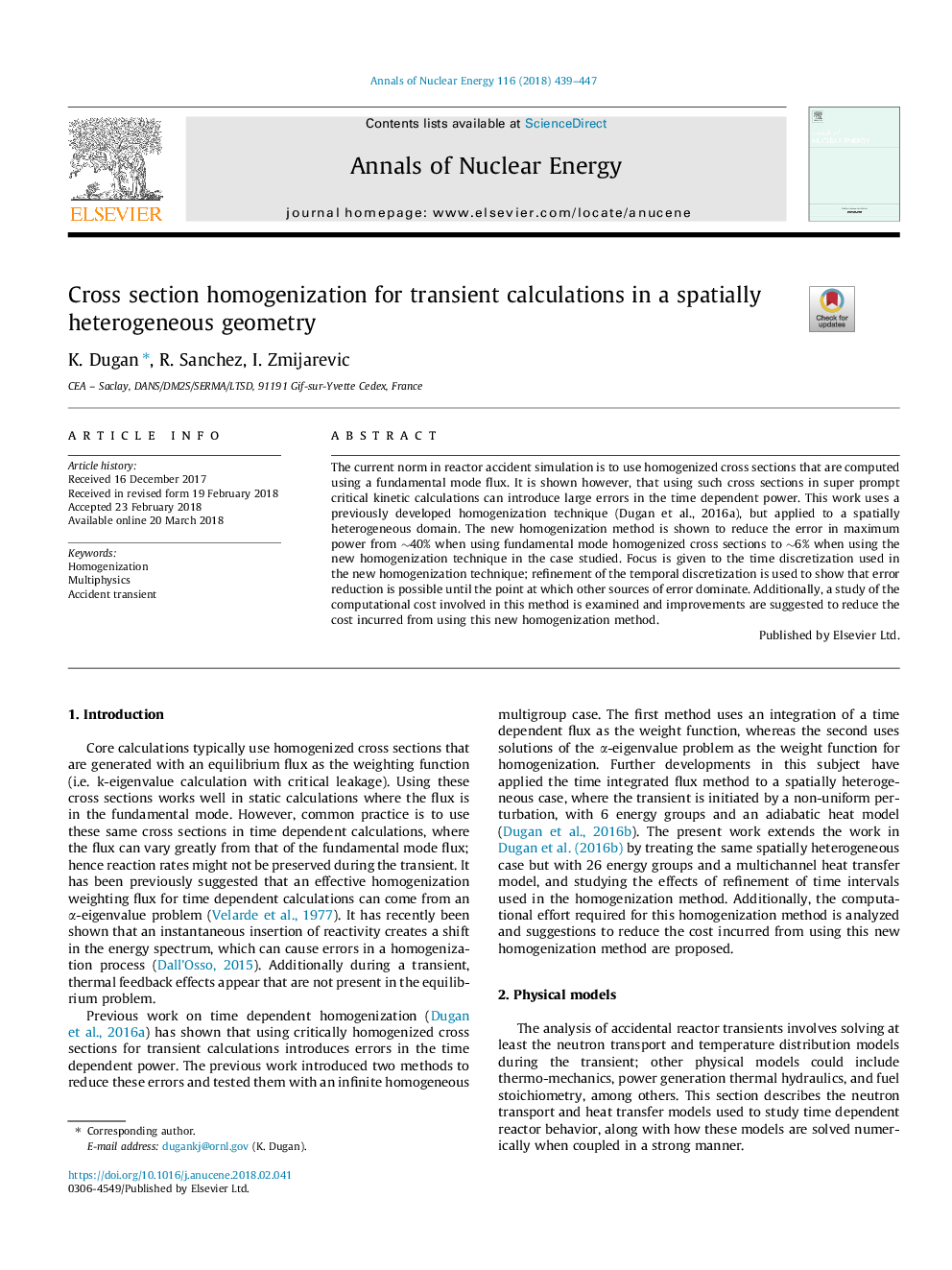| Article ID | Journal | Published Year | Pages | File Type |
|---|---|---|---|---|
| 8067090 | Annals of Nuclear Energy | 2018 | 9 Pages |
Abstract
The current norm in reactor accident simulation is to use homogenized cross sections that are computed using a fundamental mode flux. It is shown however, that using such cross sections in super prompt critical kinetic calculations can introduce large errors in the time dependent power. This work uses a previously developed homogenization technique (Dugan et al., 2016a), but applied to a spatially heterogeneous domain. The new homogenization method is shown to reduce the error in maximum power from â¼40% when using fundamental mode homogenized cross sections to â¼6% when using the new homogenization technique in the case studied. Focus is given to the time discretization used in the new homogenization technique; refinement of the temporal discretization is used to show that error reduction is possible until the point at which other sources of error dominate. Additionally, a study of the computational cost involved in this method is examined and improvements are suggested to reduce the cost incurred from using this new homogenization method.
Keywords
Related Topics
Physical Sciences and Engineering
Energy
Energy Engineering and Power Technology
Authors
K. Dugan, R. Sanchez, I. Zmijarevic,
